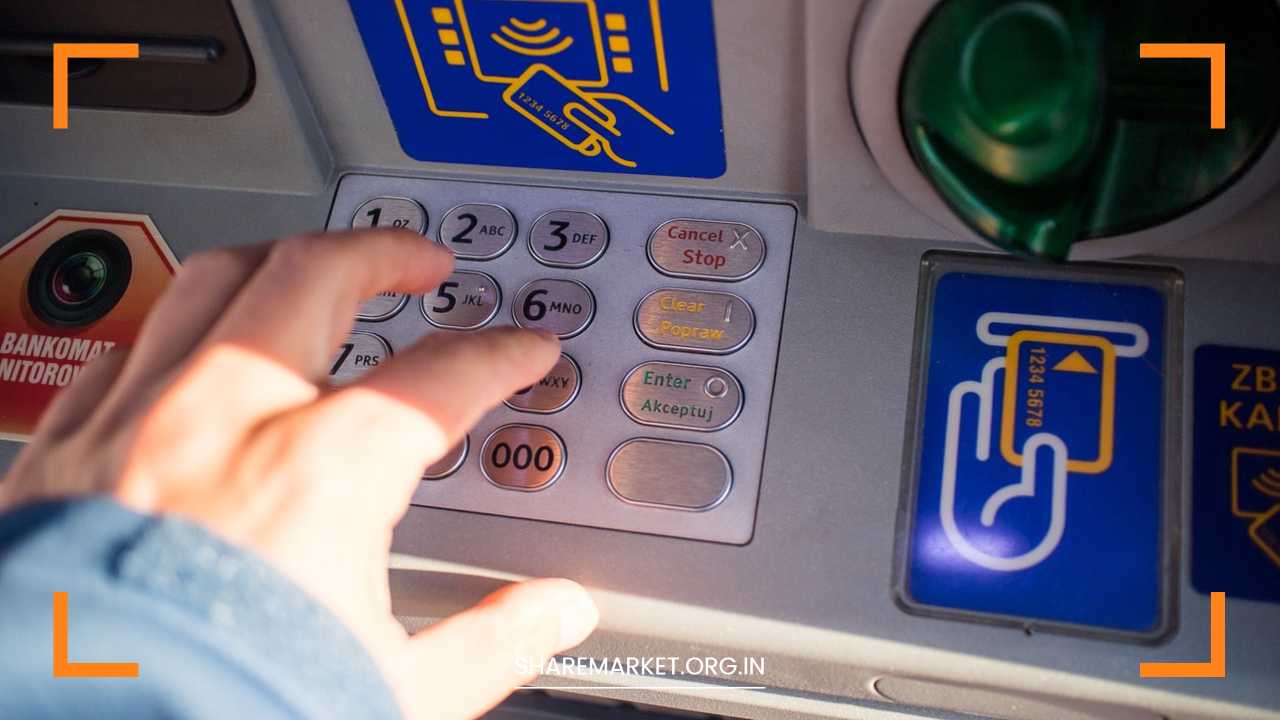New ATM Cash Withdrawal Rule: Banks Can Charge Up to Rs 23 Beyond Free Transactions Starting May 1, 2025

New ATM Cash Withdrawal Rule
New ATM Cash Withdrawal Rule: Banks Can Charge Up to ₹23 Beyond Free Transactions Starting May 1, 2025
Starting May 1, 2025, withdrawing cash from ATMs beyond the free limit will cost bank customers more. The Reserve Bank of India (RBI) has announced that a charge of up to ₹23 will be levied per transaction for ATM withdrawals that exceed the free monthly limits set by banks.
This move aims to address the increasing costs faced by banks in operating their ATM networks, while also encouraging customers to be more mindful of their cash withdrawal practices.
How Does the New Rule Impact Bank Customers?
The new rules stipulate that customers who withdraw cash from ATMs beyond the free monthly transaction limits will incur a charge of up to ₹23 per transaction.
This applies to withdrawals made from both the bank’s own ATMs as well as ATMs of other banks, subject to the limits set by the banks for free transactions. Let’s break down what these limits are and how the charges will apply:
- Free Transactions at Bank ATMs: Each month, customers are allowed up to five free transactions at their own bank’s ATMs. These five transactions include both financial transactions (such as cash withdrawals) and non-financial transactions (like checking account balances, mini-statements, etc.).
- Free Transactions at Other Bank ATMs: Customers are also entitled to make free transactions from ATMs of other banks, but these come with limits based on the location:
- Three free transactions in metro centers (such as Delhi, Mumbai, Bangalore, etc.)
- Five free transactions in non-metro centers (smaller towns and rural areas)
If a customer exceeds these free transaction limits, they will be charged a fee of up to ₹23 per transaction, starting May 1, 2025.
What Does This Fee Increase Mean for You?
The increased fee of ₹23 per transaction represents a jump from the earlier fee of ₹21, which had been in place since January 1, 2022.
This means that from May 2025, customers will pay ₹2 more for ATM withdrawals that exceed the free limit.
Although the increase might seem modest, for customers who regularly exceed their free transaction limits, this can add up to a significant additional cost over time.
It’s important to note that the RBI’s new rule applies not only to traditional ATM cash withdrawals but also to transactions carried out on cash recycler machines.
These machines, which accept cash deposits, will also be subject to the new fee structure, as long as the transaction is not related to cash deposits.
Why Is the RBI Imposing This Fee Increase?
The RBI’s decision to allow banks to increase ATM transaction fees is largely driven by the rising operational costs associated with running ATM networks.
ATMs are expensive to maintain, and many public-sector banks have been struggling to cover the costs involved in providing this service.
In fact, in a recent statement to the Lok Sabha, the Finance Ministry revealed that many government banks were running at a loss due to the ongoing costs associated with their ATM operations.
By allowing banks to charge customers more for exceeding the free transaction limit, the RBI is providing a means for banks to offset some of these operational losses.
Additionally, it is hoped that this will encourage customers to reduce their reliance on physical cash withdrawals, which could lead to a greater adoption of digital banking services.
This, in turn, could reduce the overall burden on ATM networks, helping to bring down costs for both banks and customers in the long run.
Changes to ATM Interchange Fees
Alongside the increase in withdrawal charges, the RBI has also made changes to the ATM interchange fee structure.
The interchange fee is the fee that one bank pays to another when a customer uses a different bank’s ATM.
The RBI has now stated that ATM networks will be responsible for deciding the interchange fees, which is a shift from the previous norm.
Previously, in 2021, the RBI had set a fixed interchange fee for transactions at other banks’ ATMs. The fixed rates were:
- ₹17 for financial transactions (such as cash withdrawals)
- ₹6 for non-financial transactions (like balance inquiries or mini-statements)
With the new decision, these fees will no longer be regulated by the RBI and will be left to the discretion of individual ATM networks.
This change could potentially lead to some variations in interchange fees, depending on the ATM network and the bank involved.
How Will This Affect ATM Users?
While the increase in fees may not directly affect customers who are mindful of their free transaction limits, it will certainly have an impact on those who regularly exceed them.
If you frequently withdraw cash from ATMs, it’s important to keep track of how many free transactions you have left each month.
Additionally, customers who rely on ATMs from other banks, particularly in metro centers, may find that the new charges accumulate faster than expected, especially if they hit the free transaction limit frequently.
To avoid additional charges, customers can explore other methods of banking that don’t involve cash withdrawals.
For instance, using digital payment methods, mobile wallets, or UPI transactions can significantly reduce the need for ATM withdrawals, thereby helping to stay within the free limits.
Moreover, some banks offer cashback, reward points, or other incentives for digital payments, which could further encourage customers to move away from cash-based transactions.
The Bigger Picture: Impact on the Banking Sector
The RBI’s decision is part of a broader strategy to streamline the banking sector and promote financial inclusion in India.
With more people shifting towards digital banking, the reliance on ATMs for cash withdrawals is expected to decrease over time.
As a result, banks may be able to redirect resources towards more modern and cost-effective banking solutions, such as mobile banking and online platforms.
In the long run, these changes could contribute to a greater push towards a less cash-dependent economy, reducing the overall demand for ATMs and improving the efficiency of the banking system.
For now, however, the increased charges will likely prompt customers to adjust their banking habits and become more conscious of the cost associated with physical cash withdrawals.
What Should You Do Now?
If you’re someone who frequently uses ATMs for cash withdrawals, it’s important to stay updated on the new fee structures coming into effect in May 2025.
Consider setting a reminder to track your free transactions each month and explore alternative ways to manage your money, such as digital payments, mobile banking, or online transfers.
Staying within the free withdrawal limits will help you avoid the new ₹23 fee and ensure you’re making the most of your banking services without unnecessary additional costs.

















